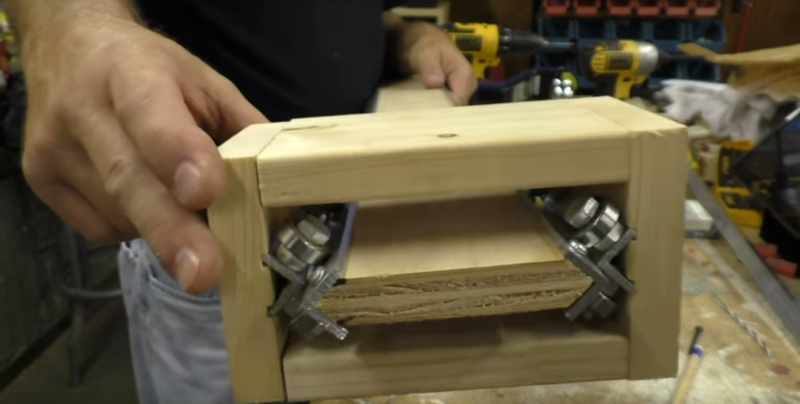Camera slides can make for interesting dolly shots in your videos, or can spice up an otherwise drab time-lapse sequence. When it came time for one of his own, [Bob] did what any hacker would do and rolled his own motorized camera slide in the wood shop.
We always like to see work based on a hacker’s own prior art, and [Bob] managed to leverage parts and techniques from his impromptu claw machine build for this slider. The rollers in this project use the same 3/4″ angle aluminum and skateboard bearings as the previous build. The bearings roll on a plywood strip capped with the same angle stock for durability and low friction. The stepper motor bracket and pillow blocks are 3D printed, as are the timing pulleys. [Bob] admits that the whole rig is a little noisy and blames it on the rough quality of the pulley prints. He has plans to replace them with commercially available pulleys, which should help; one further suggestion we have is to code a soft-start algorithm into the ATtiny85 to eliminate that jerkiness you see when he demos the slider in the video below.
There are plenty of ways to move a camera along a single axis, and a surprising number of them use parts from the roller sports. We’ve covered quite a few of them before, like this slide that uses skateboard trucks, or this non-motorized rig built from fence posts and inline skate wheels.
















Too wood oriented for my taste, but not too shabby in in itself of course.
When life hands you wood…
You make wood-aide ?
Pretty sure the folks at Viagra already have that one covered.
No that’s for when life doesn’t hand you wood.
I wonder how heavy the whole assembly is, and how that compares with other builds using other materials.
Because although wood is heavy, so is steel, which is regularly used for such projects. You do need a stiff material after all
I’d agree that the whole bed assembly is not quite stiff enough. Even though it’s plywood, which should be pretty stiff, a long narrow strip like that is just a bit too compliant.The top of the bed is nicely stiffened by the aluminum angles. Maybe the same thing for the bottom. You could even just wrap the edges of the bottom pieces with more aluminum.
But the point is that like [Bob]’s earlier claw machine, this was a way to get something done with the materials and skills on hand. There’s always more than one way to do it, but actually getting something done is far superior to fussing with the perfect design that never makes it off the paper.